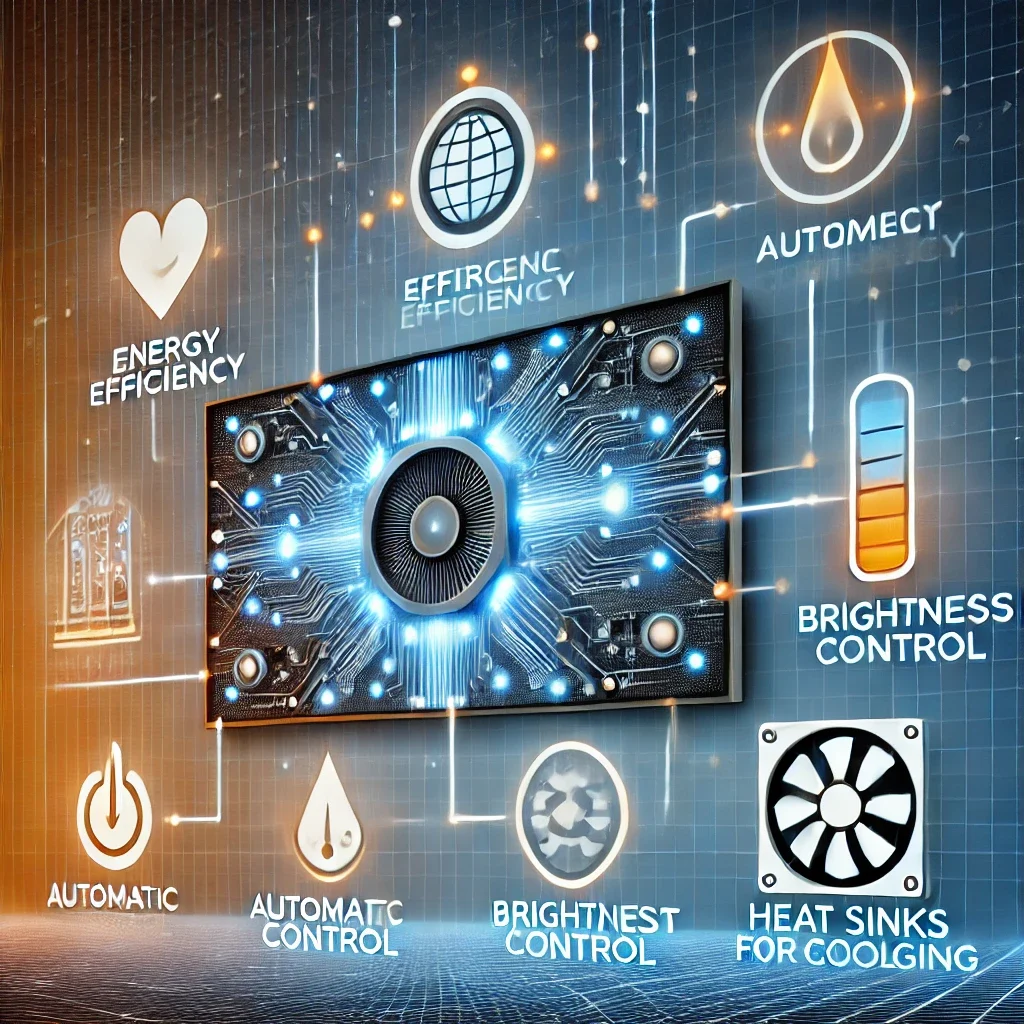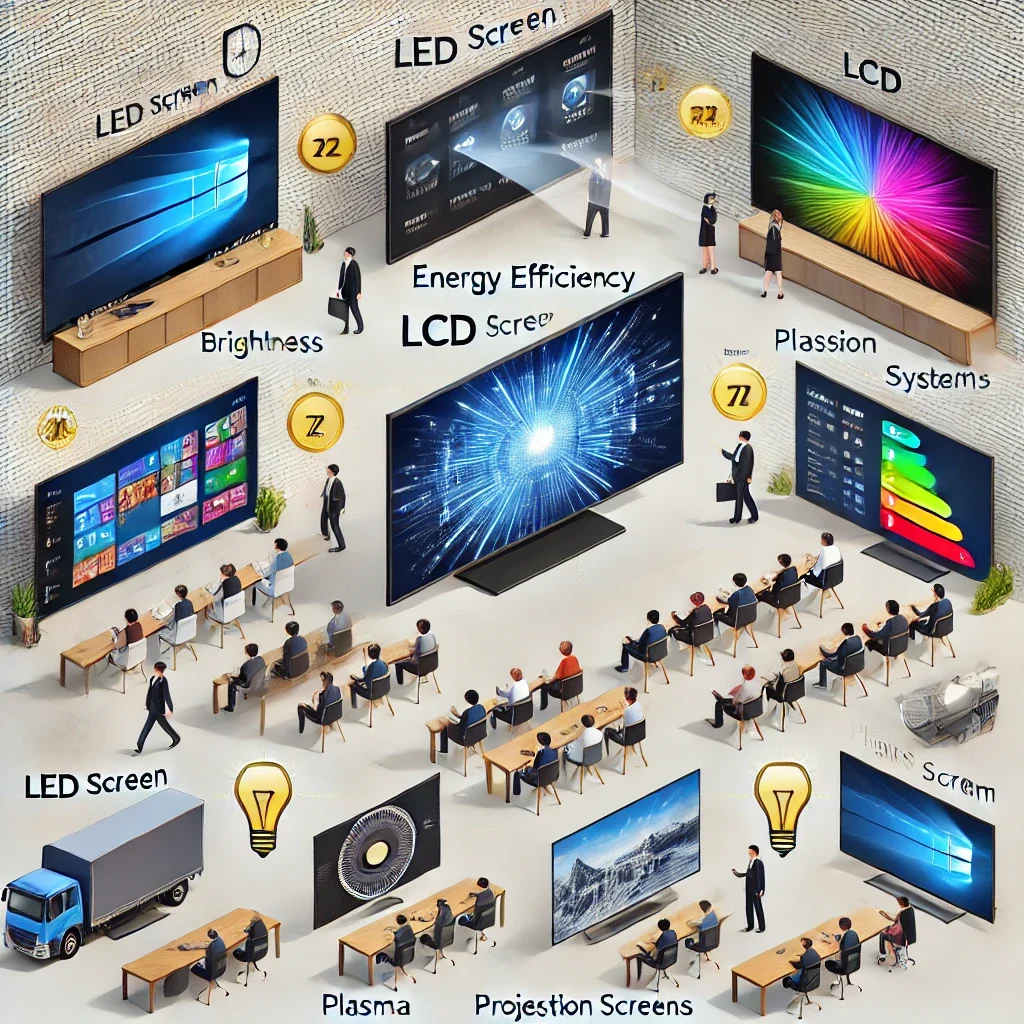Learn how to maximize LED screen performance and efficiency with tips on energy-saving, durability, and comparing LED technology to other display options. Enhance your screen’s longevity and reduce costs. LED screens are renowned for their vibrant displays and versatile applications, but to truly harness their potential, it’s essential to understand how to maximize their performance and efficiency.
Whether you’re using an LED screen for advertising, entertainment, or corporate purposes, optimizing its performance can lead to better visuals, longer lifespan, and lower energy costs. In this article, we’ll explore key factors that influence LED screen performance, including energy efficiency, lifespan, and how LED screens compare to other display technologies.

Energy Efficiency in LED Screens
One of the standout features of LED screens is their energy efficiency. Compared to traditional display technologies like LCD or plasma, LED screens consume significantly less power, making them a cost-effective and environmentally friendly choice.
Factors Contributing to Energy Efficiency
- LED Technology: LED screens use light-emitting diodes that require less power to produce bright images compared to older technologies that rely on backlighting.
- Automatic Brightness Control: Many modern LED screens are equipped with sensors that adjust brightness levels based on ambient light conditions. This not only improves visibility but also reduces power consumption when high brightness isn’t necessary.
- Efficient Power Supplies: High-quality LED screens often include efficient power supply units that minimize energy waste, cost and sustainability ensuring that most of the electricity consumed goes directly into producing light.
Benefits of Energy Efficiency
- Cost Savings: Lower energy consumption translates into reduced electricity bills, which is especially beneficial for large installations or screens that operate 24/7.
- Environmental Impact: By using less energy, LED screens contribute to reducing carbon footprints, aligning with sustainable practices and green initiatives.
- Extended Lifespan: Efficient power use reduces stress on the internal components of the screen, potentially extending its operational lifespan.
Lifespan and Durability of LED Screens
The durability and longevity of LED screens are among their most appealing features. Unlike other display technologies that may suffer from screen burn-in or color degradation over time, LED screens are built to last.
Factors Affecting Lifespan
- Quality of Components: High-quality LED screens use premium materials and components, which can significantly extend their lifespan. Investing in a reputable brand or manufacturer often results in longer-lasting performance.
- Heat Management: As discussed in previous articles, effective heat dissipation is crucial for maintaining the longevity of LED screens. Overheating can lead to component failure, reducing the screen’s operational life.
- Usage Patterns: Constant operation at maximum brightness can shorten the lifespan of an LED screen. By managing brightness levels and incorporating rest periods, users can prolong the screen’s usability.
Comparing Lifespan with Other Technologies
LED screens generally offer a longer lifespan compared to LCDs and plasma displays. While the exact lifespan depends on usage and maintenance, it’s not uncommon for high-quality LED screens to operate effectively for over 100,000 hours. This durability makes them a preferred choice for applications that require long-term, reliable display solutions.

Comparing LED Screens to Other Display Technologies
When evaluating LED screens, it’s important to compare them to other available display technologies to understand their strengths and potential drawbacks.
LED vs. LCD
- Brightness: LED screens are typically brighter than LCDs, making them better suited for environments with high ambient light or outdoor installations.
- Energy Consumption: LED screens consume less power than LCDs, especially those using LED backlighting rather than traditional CCFL (Cold Cathode Fluorescent Lamp) backlighting.
- Color Accuracy: While both technologies offer good color reproduction, LED screens generally provide more vibrant and accurate colors, especially in high-end models.
LED vs. Plasma
- Lifespan: LED screens have a longer lifespan compared to plasma displays, which are prone to screen burn-in and color degradation over time.
- Energy Efficiency: Plasma screens consume more power than LED screens, making them less energy-efficient, particularly for large installations.
- Weight and Thickness: LED screens are lighter and thinner than plasma displays, making them easier to install and integrate into various environments.
LED vs. Projection Systems
- Image Quality: LED screens offer superior image quality compared to projection systems, especially in terms of brightness and contrast. Projection systems often require controlled lighting conditions to achieve the best results.
- Maintenance: LED screens generally require less maintenance than projection systems, which involve regular bulb replacements and adjustments.
- Flexibility: While projection systems can create large images, LED screens offer more flexibility in terms of shape, size, and installation options, such as curved or wrap-around displays.
Maximizing Performance through Regular Maintenance
Regular maintenance is key to ensuring LED screen performance remains at its peak. Here are some tips to keep your screen in optimal condition:
- Clean the Screen: Dust and debris can accumulate on the surface of the screen, affecting image quality. Regular cleaning with appropriate materials can prevent this.
- Check Connections: Periodically inspect all connections and cables to ensure they are secure and functioning correctly.
- Software Updates: Keep the screen’s firmware and control software up to date to benefit from the latest performance enhancements and features.
- Monitor Performance: Use diagnostic tools to monitor the screen’s performance, identifying potential issues before they become serious problems.
Key Takeaways
Maximizing LED screen performance involves understanding the factors that influence energy efficiency, durability, and how these screens compare to other technologies. By investing in quality components, implementing regular maintenance, and leveraging the inherent advantages of LED technology, users can ensure their screens deliver exceptional performance over the long term. Whether for advertising, entertainment, or professional use, optimizing LED screens can lead to better visuals, lower costs, and a more sustainable operation. Additionally, incorporating a rental strategy for LED screens can provide flexibility and cost-effectiveness, allowing users to adapt to changing needs and technological advancements without the commitment of ownership.
